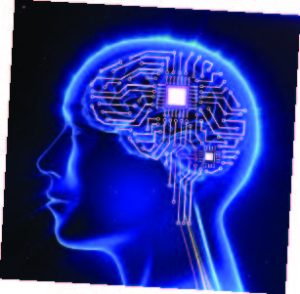 Schizophrenia Game-Changer?
Schizophrenia Game-Changer?
A team of researchers from Broad Institute, Harvard Medical School and Boston Children’s Hospital has identified a molecular process in the brain that helps to trigger schizophrenia. It may reveal what goes wrong in a young person diagnosed with the disease. “Research has identified several genes associated with schizophrenia,” says

Mona Ismail, MD
Medical Director Child Partial Hospital Program 908.994.7028
Mona S. Ismail, MD, Medical Director of Trinitas’s Child Partial Hospital Program. “But, until this study, we needed to know their mechanism of action that leads to the manifestation in young adults.” The landmark discovery, published in the February edition of Nature, could be a game-changer, given the emphasis on early detection and new treatments for schizophrenia. Dr. Steven Hyman of MIT, a former director of the National Institute of Mental Health (NIMH) says he is “almost giddy about these findings.” The process identified in the study shows that the risk of schizophrenia is dramatically increased if a young person has inherited variants of a gene important to synaptic pruning, the healthy reduction during adolescence of brain-cell connections that are no longer needed. What neurologists find especially exciting is that this discovery helps makes sense of a lot of other observations about the disease, which affects more than 25 million people around the world. “The question now is, ‘How can we use this information to alter this disease process?’” Dr. Ismail adds. “If we can interrupt it, then we might be looking at a possible cure rather than a lifetime of prescriptions for symptom management, at best. I think with the advancements of genetic and molecular science we are getting there.”
 The Health Benefits of Equal Pay
The Health Benefits of Equal Pay
Researchers across the river at Columbia University recently looked at data on 22,000 working adults between the ages of 30 and 65 hoping to understand why women are more likely to suffer from depression and anxiety than men. What they found was that women who make less than men with similar levels of education and experience were four times more likely to develop an anxiety disorder, and 2.5 times more likely to suffer from depression. Those gaps all but disappeared, however, among women who made the same or more money than their male counterparts. The gender wage gap—when added to the added responsibility for childcare and housework—produces feelings of inequality, unfairness and insecurity that seem to account for the prevalence of anxiety and depression. “Primary care physicians don’t typically discuss wages or income with patients,” says

Vasyl Pidkaminetskiy, MD Trinitas Physicians Practice 732.499.9160
Vasyl Pidkaminetskiy, MD, of Trinitas Physicians Practice in Rahway. “They may touch on general job and family stress, and focus on symptoms and family history as part of making a diagnosis of depression. Since this study points to inequality in pay as it contributes to the rates of depression among women, that is something we as primary care physicians should include in our conversations with patients in the future.”
 Screen Strain: It’s a Thing
Screen Strain: It’s a Thing
Multi-taskers be warned: The Vision Council released a report in January after surveying 10,000 people who spend a large portion of their day in front of a computer screen. The survey revealed that people who use multiple devices (e.g. tablet, e-reader, smart phone, smart watch) at the same time experience eye strain, and neck, back and shoulder pain more than users of one device. People in their 20s are most at risk, as they are the most likely to use multiple devices. More than 70 percent of the people in the survey reported these symptoms. Overall, about 60 percent of us use electronic devices for five or more hours a day. The good news is that digital eye strain is almost always a temporary problem. It is caused by the tiny muscles in the eye being overworked focusing on objects close to the face, or adjusting to differing levels of illumination.
 Small Wonder
Small Wonder
One of the major obstacles in treating lung disease has been getting medicine to tough-to-reach parts of the respiratory system. A joint project between Malaysian scientists and Harvard University School of Public Health researchers is seeking a safe and effective way to overcome this obstacle through the development of “smart” nanoparticles that are even smaller than the particles produced by the fine sprays and mists used by lung cancer and COPD patients today. Nanotechnology is the manipulation of matter at a molecular scale, up to 100 nanometers. A nanometer is one billionth of a meter.

Vipin Garg, MD
Director, Trinitas Comprehensive Sleep Disorders Center 908.994.8880
Dr. Vipin Garg, a board-certified physician in pulmonology at Trinitas, is intrigued by this idea. “Those of us who treat patients with obstructive airway diseases like COPD and asthma increasingly realize the important role that smaller airways play in these diseases,” he says. “Our experience shows that newer inhalers with particles reaching the smaller airways have improved management of these diseases.” Currently about 10 percent of deaths are caused by irreversible obstruction of the airway.
 What You Don’t Know Can Hurt You
What You Don’t Know Can Hurt You
Urinary Tract Infections (UTIs) account for more than 8 million doctor visits a year in the U.S., generating $1.6 billion in health costs. They are also the second-greatest reason why doctors prescribe antibiotics to women. Yet as two recent studies show, women know surprisingly little about UTIs. For example, only 13 percent of women 18 to 45 knew that sexual activity is a primary cause of bladder infection, and were unaware of the basic precautions that can prevent it. Thirty-nine percent of women assumed that UTIs go away if they do nothing. The fact is that if UTIs are left untreated they can lead to kidney infections, kidney stones or even kidney failure.
 Gene-Editing Breakthrough
Gene-Editing Breakthrough
A team of scientists at the University of Texas Southwestern Medical Center has used a new gene-editing technique to halt the progression of Duchenne muscular dystrophy in mice. Duchenne is a rare disorder caused by a mutation in the protein dystrophin. It results in muscle degeneration and premature death. The mutation is carried on the X chromosome. It can be carried by males and females, but strikes boys, usually around age 2 or 3. If the technique is successfully scaled up, it will be the first to eliminate the cause of the disease as opposed to just diminishing its effects. The UT team published its findings in Science.
 Mind & Body Connection
Mind & Body Connection
You learn something new every day. For centuries it had been widely accepted in medicine that the brain did not have a direct connection to the immune system. An NIH-funded study completed by University of Virginia researchers in 2015 proved otherwise, as malfunctions in these vessels were shown to contribute to certain neurological diseases, including Alzheimer’s and autism. Abnormal immune activity had been associated with psychiatric conditions in the past, but the UVA study showed evidence of direct links.





